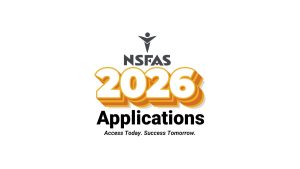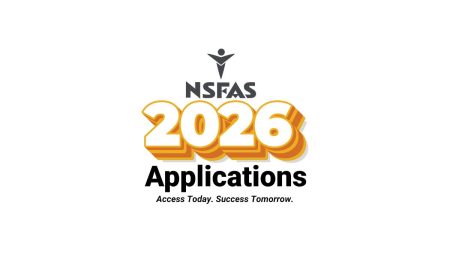If you’re a South African student struggling to finance your tertiary education, the NSFAS Missing Middle Loan Application is a lifeline. Unfortunately, not everyone qualifies for financial aid through the National Student Financial Aid Scheme (NSFAS) on their first attempt. But don’t lose hope — there’s still a chance to appeal if your NSFAS Missing Middle Loan Application has been denied.
In this article, we will guide you through the steps to appeal a rejection, giving you a clear understanding of the process, requirements, and what you can do to increase your chances of a successful appeal.
Why Your NSFAS Missing Middle Loan Application Might Be Rejected
There are several reasons why an NSFAS Missing Middle Loan Application might be rejected. Understanding these reasons will help you address them when submitting an appeal:
- Incomplete or incorrect documentation: If the necessary supporting documents weren’t provided or were incorrect, NSFAS will not be able to fully assess your application.
- Exceeding the income threshold: If your family income exceeds the R600,000 threshold, your application may be denied.
- Poor academic performance: NSFAS may reject applications if you haven’t met their academic performance requirements, such as passing a certain number of modules or subjects.
- Insufficient NSFAS funds: Sometimes, even if you meet all criteria, NSFAS might have already allocated all available funds, leading to rejections.
Now that you understand the potential reasons, let’s look at how to appeal the decision.
Know Your Status: Check Your NSFAS Application Status Anytime, Anywhere on Your Phone
How to Appeal Your NSFAS Missing Middle Loan Application Rejection
Appealing an NSFAS Missing Middle Loan Application decision is a straightforward process, but it requires careful attention to detail. Here’s a step-by-step guide to help you through the process:
Step 1: Understand the Reason for Rejection
When your NSFAS Missing Middle Loan Application is rejected, NSFAS will inform you of the reason. This notification is typically sent via email, SMS, or displayed on your MyNSFAS account. Carefully review the reason for the rejection, as it will guide you on how to prepare your appeal.
For example:
- If your application was incomplete, you’ll need to submit the missing documents.
- If it was due to academic reasons, you’ll need to provide an explanation or proof of any extenuating circumstances that affected your performance.
Step 2: Gather the Required Documents
Once you know why your application was rejected, gather the necessary documents to support your appeal. This might include:
- Proof of income: If your household income information was incomplete or incorrect, ensure you provide accurate payslips, bank statements, or other income proof.
- Academic records: If the rejection was due to poor academic performance, submit a clear explanation along with supporting evidence such as medical certificates, if health issues affected your studies.
- Corrected or additional documentation: If any documents were missing or incorrect, make sure to provide the correct versions.
Step 3: Submit the Appeal on Time
You must submit your appeal within the specified time frame after receiving the rejection. Typically, NSFAS gives students 14 to 30 days to lodge an appeal after being notified of their rejected NSFAS Missing Middle Loan Application. Ensure you submit your appeal within this window to avoid automatic disqualification.
Step 4: Submit the Appeal Through the NSFAS Portal
NSFAS has made it easy to submit appeals online. Follow these steps:
- Log into your MyNSFAS account: Visit the NSFAS website and log in with your credentials.
- Navigate to the appeals section: Once logged in, find the section dedicated to appeals.
- Fill out the appeal form: Clearly explain why you believe your NSFAS Missing Middle Loan Application should be reconsidered. Make sure your explanation is detailed and honest.
- Upload supporting documents: Upload all the necessary documents that support your appeal. Double-check to ensure all documents are clear and legible.
- Submit your appeal: Once everything is completed, submit the appeal. You should receive a confirmation that your appeal has been submitted successfully.
Step 5: Track Your Appeal
After submitting your appeal, regularly check your MyNSFAS account to monitor the status of your appeal. Processing times vary, but NSFAS will inform you once a decision has been made. It’s important to stay patient and continue checking for updates.
Step 6: Prepare for the Outcome
Once NSFAS reviews your appeal, they will notify you of the outcome. If your appeal is successful, you will receive the loan you applied for. However, if your appeal is unsuccessful, you will need to explore other financial aid options to continue with your studies.
Tips to Improve the Chances of a Successful Appeal
Here are some useful tips to ensure that your NSFAS Missing Middle Loan Application appeal has the best chance of success:
- Be thorough with your documentation: Ensure all necessary documents are attached and accurate. Missing or incorrect documents are the most common reason for appeal denials.
- Explain your situation clearly: If you’re appealing based on academic performance or other personal challenges, be specific and provide supporting documentation.
- Ensure your household income is within the threshold: If your appeal is due to a misunderstanding or error regarding income, make sure the correct information and proof are submitted.
- Meet the deadline: Always submit your appeal within the specified time frame.
- Keep copies of everything: Save copies of your appeal, supporting documents, and any communication with NSFAS for your records.
What to Do If Your Appeal is Unsuccessful
If your NSFAS Missing Middle Loan Application appeal is denied, don’t despair. There are other options you can explore for funding your education, including:
- University bursaries and scholarships: Many universities offer bursaries and scholarships to students who need financial aid. Contact your university’s financial aid office to learn more.
- Private loans: Some banks offer student loans that may be a good alternative. Compare loan terms and interest rates before making a decision.
- Part-time work or work-study programs: Many universities offer part-time job opportunities or work-study programs that help students cover their tuition costs.
Applying for financial aid can be stressful, especially when your NSFAS Missing Middle Loan Application is rejected. However, with a clear understanding of the reasons for rejection and a well-prepared appeal, you have a chance to overturn the decision and secure the funds you need to continue your studies.
Remember to act quickly, be thorough with your documentation, and stay positive throughout the process. Even if your appeal is denied, there are other avenues to explore that can help you achieve your educational goals.










